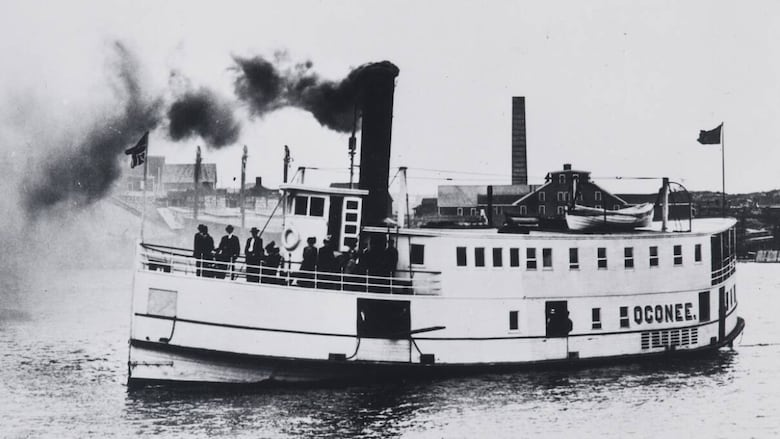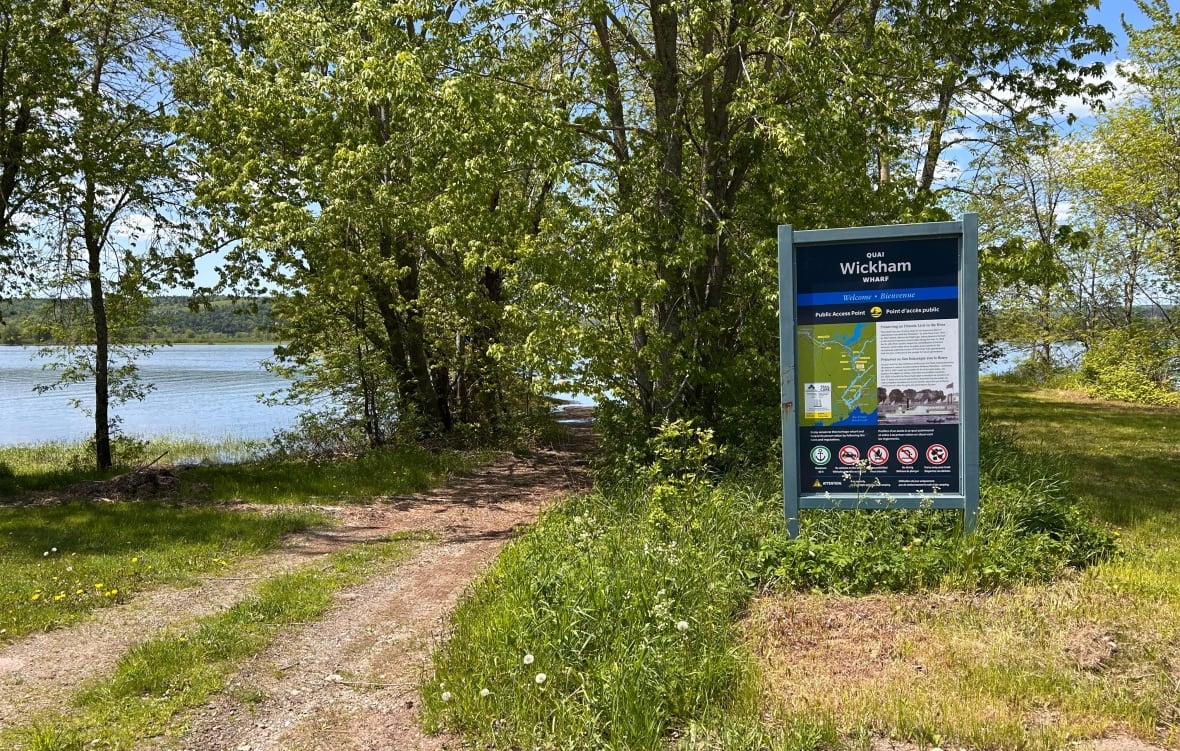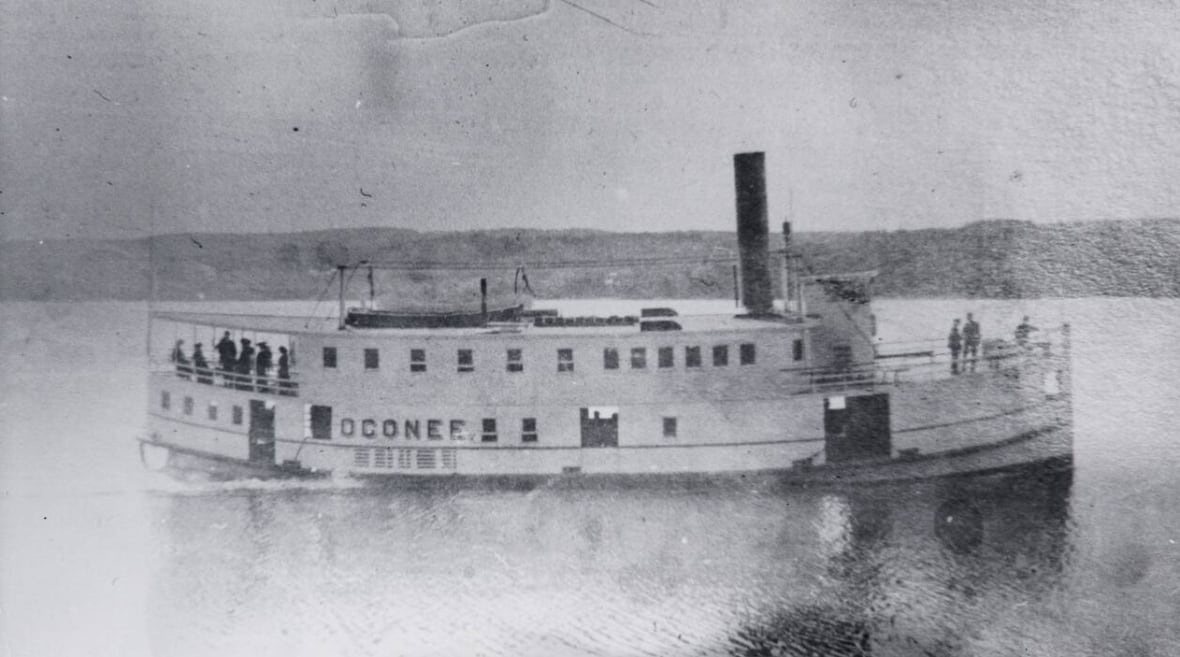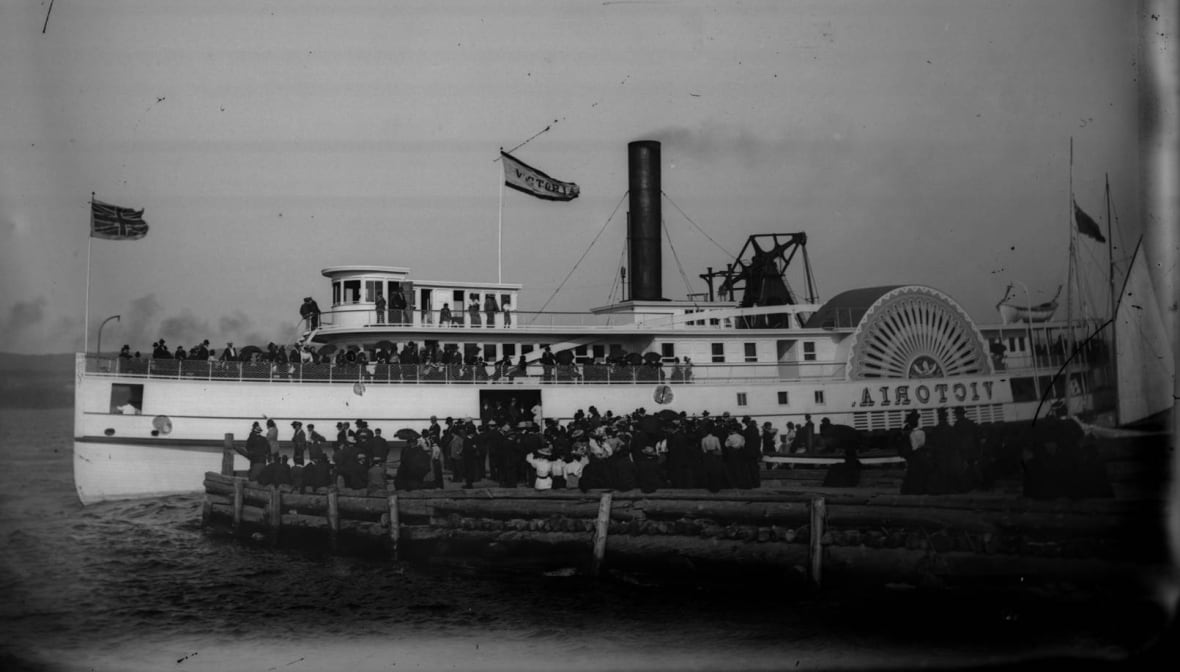This southern N.B. wharf was bustling with steamboat commuters a century ago
Wickham Wharf was once a hot spot for the St. John River steamboat business

What is now a quiet riverbank was once a bustling transportation link for the residents of Wickham a century ago.
Before railways and highways, steamboats used to chugged up and down the river from wharf to wharf, picking up passengers and cargo, said Roadside History explorer James Upham.
"Say 1914, 1913, if we were standing here at about quarter to six in the morning, there'd be a steamboat waiting right there to run a commuter service," he said.
The Wickham Wharf that Upham is referring to is nearly 50 kilometres north of Saint John on the eastern bank of the St. John River.
"It's kind of amazing to imagine what is currently a very sleepy little community at one point being able to sustain its own commuter steamboat service," said Upham.
He said Wickham was once "one of the busiest spots in this entire region" and the main point of import and export for the community.

People in the area would gather on the wharf each morning in the summer in order to commute to Saint John to work for the day.
The commute was two hours compared to what is now a roughly one-hour drive by car.
But, two hours on a steamboat was much more peaceful than the morning traffic some face in New Brunswick's cities, said Upham.
"Basically no traffic, plus you could just put your feet up and have a cup of tea and watch the absolutely gorgeous St. John River go past you as you're heading off to work in the morning."
One of the boats that operated from the Wickham Wharf was the Oconee, whose captain's last name was Taylor.

According to Upham and the provincial archives, the Oconee was originally a tugboat called the Stella Marie before it was lengthened by Taylor.
The archives website says the boat was renamed on June 13, 1912. It was the last of its kind on the St. John River and was scuttled, or destroyed, on March 1, 1927.
On vessels like the Oconee, there were amenities for travellers, explained Upham. Meal service was available with locally grown food, dessert and coffee or tea.
"There was a saying in the latter part of the 1800s that it was cheaper to travel than to stay home because ... for pennies, you could get a full, like, four-course meal."
Upham said companies would hire the best cooks, with the hopes of luring people onto their ships over their rivals' on the river.
Point of competition
The river's wharves were also grounds for competition, as steamboat captains raced to pick up the most commuters.
Upham said some people had their preferred ship to travel on. Along with the Oconee, the Victoria and the David Weston were also plying the waters at that time.

"If you were the first steamboat to get to a wharf, you usually got all the business that was on that wharf and the next steamboat coming along would have to just sort of put up with whoever got there late."
One trick used by steamboat captains was to leave someone on the wharf with the task of flagging down other steamboats in order to slow them down. While they picked up a single passenger, other steamboats would work their way down the river to busier stops.

"That guy waiting on the wharf waited for the next steamboat to get close enough and then started waving his handkerchief furiously so they had to pull over and pick up one person."
Upham said stories like these were written by Donald Taylor, whose father ran the Oconee, and who also became a steamboat captain.
With files from Information Morning in the Summer

